Hit the Old Salmon River Trail for a mushroom foraging adventure with kids. Plus advice on how to stay safe.
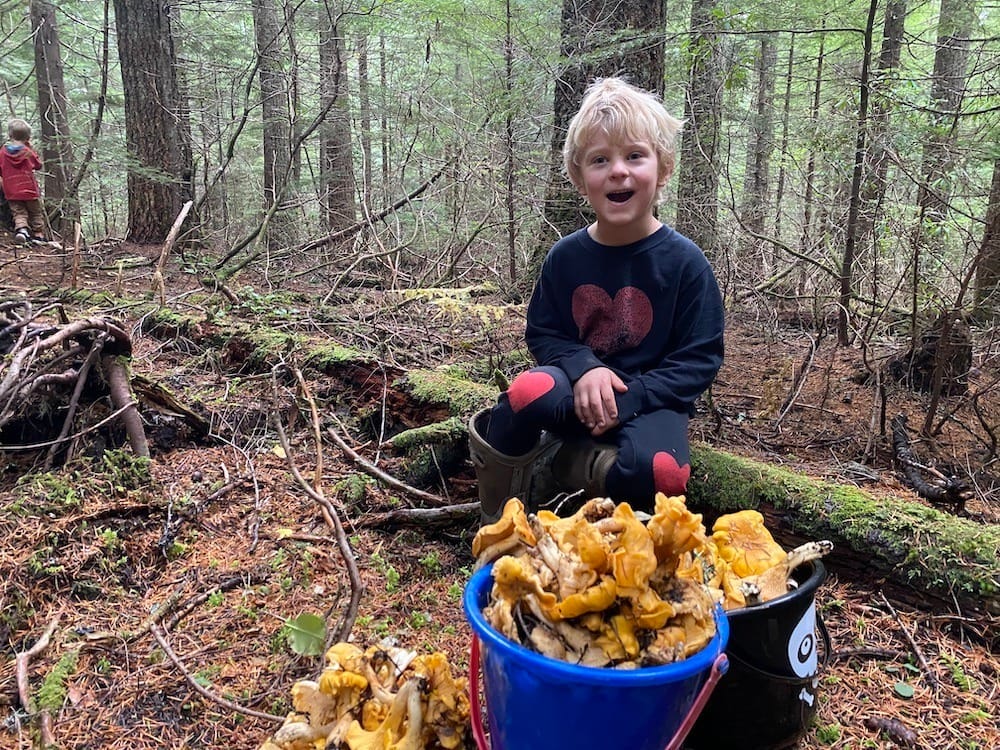
There is something undeniably enchanting about wandering through the woods with kids, the fall air crisp with the scent of pine and earth, as you search for hidden treasures beneath the forest canopy. In late September — and after a few soaking rain showers — I drove my three young boys to Old Salmon River Trail in Welches for a mushroom hunt. The forest was alive with the sounds of rustling leaves and distant bird calls, but for my young children, the magic of the day lay not in the trees or the sky, but on the damp, earthy floor beneath our feet.
Our mission was to find the golden chanterelle (pictured above), one of the most prized edible mushrooms. We eagerly grabbed our baskets and started walking the trail. The forest here is filled with mature Douglas fir trees, creating the perfect environment for chanterelles to thrive.
If you look closely, you will find a wide variety of fungi in the forest this fall. My 7-year-old son, Grady, is always intent on finding mushrooms with whimsical names like “witch’s butter,” “blood tooth fungus,” and “turkey tails” that are all safe to touch. Sure enough, he found a decaying log adorned with velvety, fan-shaped fungi. The colors were mesmerizing — a swirl of browns, greens and blues creating intricate patterns. I explained that turkey tails are a kind of fungus that helps break down wood, turning it back into soil. On a stick nearby, a translucent, golden jelly fungus (witch’s butter) glistened in the sunlight.
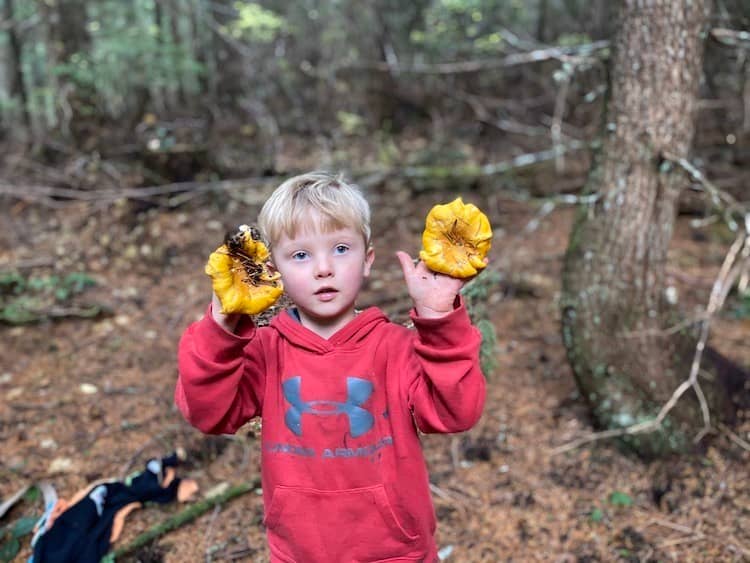
Meanwhile, my older son, Nolan, had wandered off the trail and found a cluster of golden chanterelles nestled among the mossy undergrowth. Their trumpet-shaped caps glowed in the sunlight: vibrant yellow to orange with smooth, wavy edges. He knelt to get a closer look, gently touching the thick, false gills that ran down their stems. Once he confirmed that these were indeed golden chanterelles and not their false look-alike (wooly chanterelles) he carefully trimmed the stems and put them in his basket.
Even my 4-year-old, Calum, found a pinecone with a tiny mushroom growing out of it and added a variety of fungi to his little basket. As we returned to the trail and hiked back, I reminded my boys that every mushroom tells a story. The bright red caps of a toxic fly agaric (pictured top right), the intricate pattern of a turkey tail fungus, the parasitic fungus that creates the lobster mushroom, or the strange, bulbous shape of a puffball — all these fungi are part of an intricate ecosystem in our Oregon woods. With each foraging trip, their understanding of the natural world deepens, as does their appreciation for the small wonders that often go unnoticed. And if we are lucky, we come home with a basket full of edible mushrooms for dinner as well!
Mushroom Safety Tips
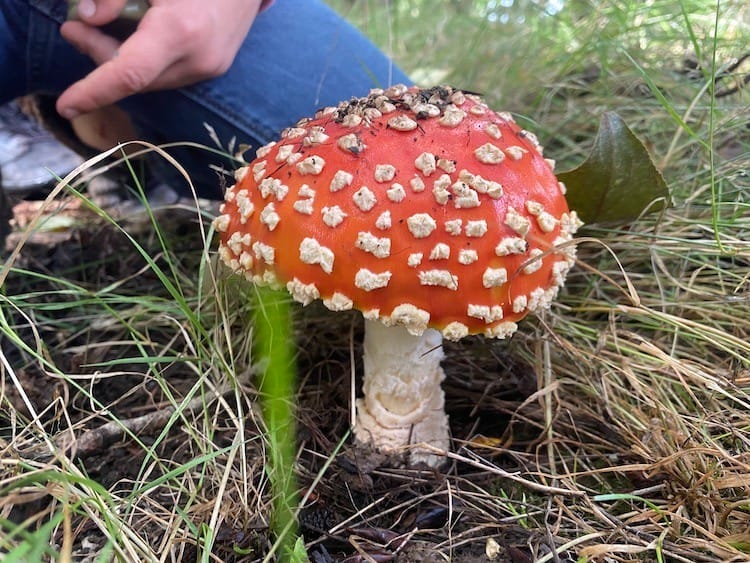
While foraging is fun, it’s crucial to remember that not all mushrooms are safe to touch or eat. Here are some safety tips to keep in mind:
- Never consume a mushroom unless you’re 100% sure it’s edible. Many mushrooms look similar to poisonous varieties, so if there’s any doubt, leave it out. The fully illustrated field guide Mushrooms of Cascadia by Christian Schwarz and Noah Seigel can help you learn more about safe mushroom picking.
- Teach kids not to touch their faces or put their hands in their mouths after handling mushrooms until they’ve washed their hands.
- Stick to well-known areas for foraging, and avoid picking mushrooms near roadsides or in areas that may have been treated with chemicals.
Navigating the Woods
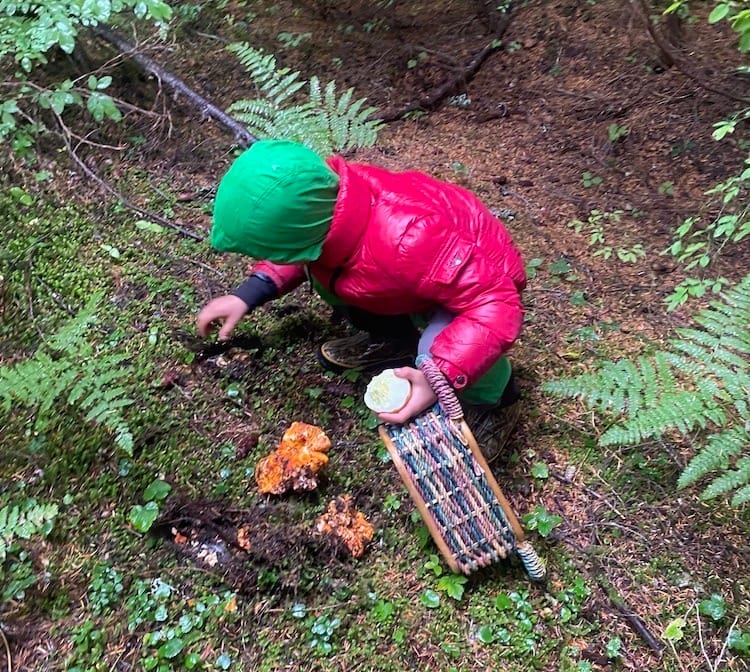
While the thrill of discovery is a big part of mushroom foraging, ensuring your family’s safety is paramount. Forests can be vast and disorienting, especially when you’re focused on the ground looking for mushrooms. It’s surprisingly easy to lose your sense of direction, so it’s important to have a reliable way to stay on track.
This is where technology comes in handy. Using a navigation app like ON x Maps can be a game-changer. Before you start your foraging adventure, open the app and mark your starting point. As you explore, you can track your route, making it easy to find your way back if you stray off course. The app also allows you to mark spots where you’ve found mushrooms, so you can return to those areas in the future.
More Spots to Forage
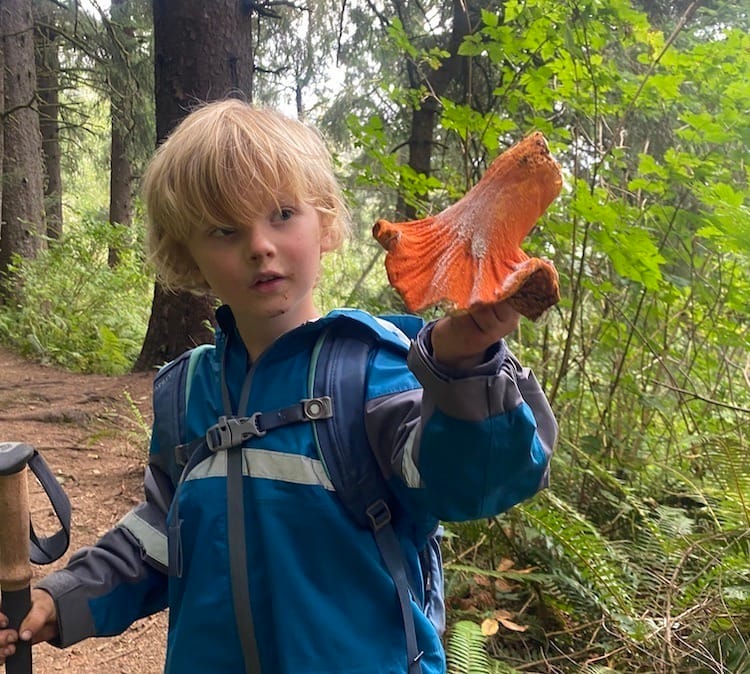
Tillamook State Forest
This hilly and off-trail wilderness area is well known for its lobster mushrooms (starting in late summer into fall) and chanterelles later in the fall and early winter.
Tumala Mountain Area
This wilderness area teeming with coniferous trees does not have many marked trails. We have found hedgehogs, cauliflower mushrooms, chanterelles and lobster mushrooms here in the fall. Early in the fall we have also found matsutake mushrooms.
Cape Lookout Trail
This 5-mile, round trip trail is all switchbacks downhill to a beach. A variety of fungi such as oyster mushrooms and lobster mushrooms grow right next to the trail in the fall after a soaking rain.
